
Ladies, our lives are filled with ups and downs, work and home life schedules to balance, and if you have children there is that dynamic to incorporate into your schedule as well. Not to mention the almost daily changes in hormone levels – whether from stress and excess cortisol production or from our monthly cycle hormone changes. Daily activities can become a challenge sometimes when we are dealing with mood swings, lack of sleep, fatigue, etc. Some days you might feel totally overwhelmed and the next day you can handle things with ease. This doesn’t seem logical does it??
It’s time to take a step back and examine how we can manage and support the unique needs of women. Women have different “life stages” – those changing hormone levels particularly associated with the natural process of aging – and the progression to – yikes – menopause! Why does it happen and how does our body react to these changes? And how can we address and reduce some of the unwanted and uncomfortable symptoms hormone fluctuations can create.
What’s inspiring today is that women are becoming more comfortable talking about the topic of their cycles and their symptoms, doing their research and asking questions. Unfortunately, there are still many questions left unanswered or “under answered” leading to more questions. That’s why it’s important to look at the facts and data and become empowered to make educated decisions on what’s right for you as an individual.
So first on our agenda is to review the “life stages” a woman experiences from teenage years through her golden years.
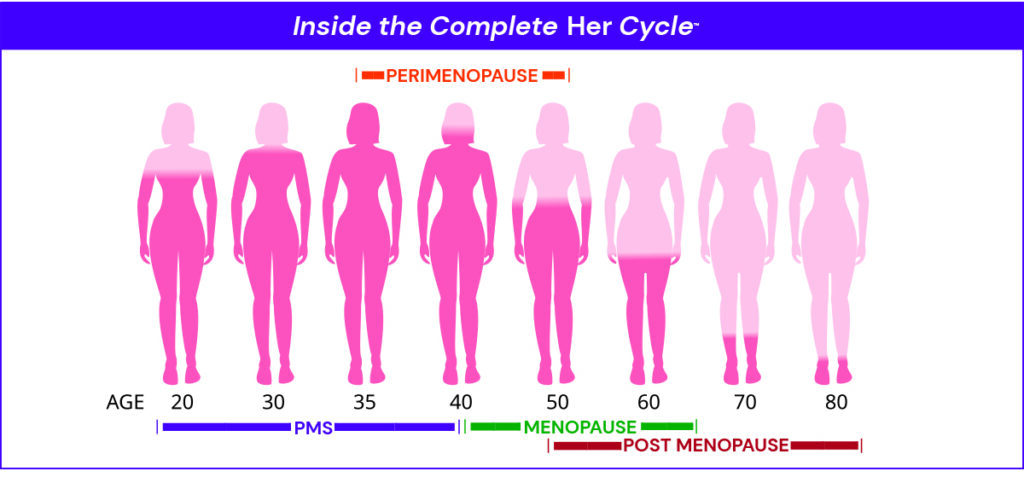
When a young girl enters into “womanhood” (as it’s often referred to) with the start of her first menstrual cycle, changes start happening, and sometimes at a rapid pace. Estrogen levels are increasing, the body shape is changing, development of breasts occurs, body hair growth increases, and often times acne develops. A girl’s first cycle can start as early as 10 and as late as 15 years of age – and the cycles continue until menopause. Each cycle brings its own set of hormone level changes and as women age these hormone levels can fluctuate even more, for a many reasons. These hormone fluctuations may bring about uncomfortable symptoms – with each life stage having its own unique set of symptoms. We can categorize a woman’s cycle aging process into 4 different stages:
Stage 1: PMS (Premenstrual Syndrome)
Stage 2: Perimenopause
Stage 3: Menopause
Stage 4: Post Menopause
As you can see from the chart above these 4 stages can have overlap in ages (since everyone is unique) so the age time frame for each cycle stage can vary greatly from woman to woman. Not only the age time frames can be different but also symptoms can be different, with some women experiencing few symptoms, while others can experience a wide range of symptoms, or symptoms vary from month to month.
Taking a look at each of the 4 life stages we’ll see the wide range of symptoms that might occur – some more robust than others. And some symptoms overlap between different stages, so be aware of that as well.
Stage 1 – PMS
In this life stage a woman can experience symptoms like moodiness, water retention, cramps or breast tenderness. And these can be mile or robust – and some women may not have any of these challenges. Referring back to the chart you will note this time frame usually is from the onset of menstruation though about age 40.
Stage 2 – Perimenopause
This life stage is often confused with menopause (and you will see that the symptoms of perimenopause and menopause are very similar). This timeframe is when hormones are beginning to decrease and fluctuate more. During perimenopause women may still be experiencing PMS symptoms (isn’t that exiting?!) in addition to the perhaps night sweats, hot flashes and nervousness. The chart shows Perimenopause can start as early as 35 years of age up into the 50’s.
Stage 3 – Menopause
Menopause is technically the 12 months when there is no menstruation. Isn’t it interesting – you don’t really know you are in menopause until you are through it? Some women will not have a cycle for 10 months and then start again. This is still Perimenopause. At month 13 with NO cycle, you are in Post Menopause and have made it through menopause! The symptoms during those 12 months are very similar to perimenopause with hot flashes and night sweats with the additional symptoms of vaginal dryness and decreased libido. Menopause can happen anywhere between the ages of 40 and 60, and sometimes even later than that!
Stage 4 – Post Menopause
You’ve made it!! Month 13 without a menstrual cycle!! However those annoying symptoms may still be around – vaginal dryness, fatigue, decreased arousal. Again, the age range for post menopause will vary depending on each woman and the uncomfortable symptoms associated with this hormone change can be different as well.
Ladies – never fear. We have FANTASTIC NEWS! Country Life Vitamins has designed a line of products to address the symptoms during each of these life stage to give women the flexibility to personalize their supplementation with options to address symptoms in ALL 4 stages of the hormone life cycle! Conveniently packaged in discrete blister packs (so no one knows what symptoms you are trying to mitigate) each of the Country Life products not only lists the unique clinically tested ingredients, but also provides information on the symptoms each product was designed to support.
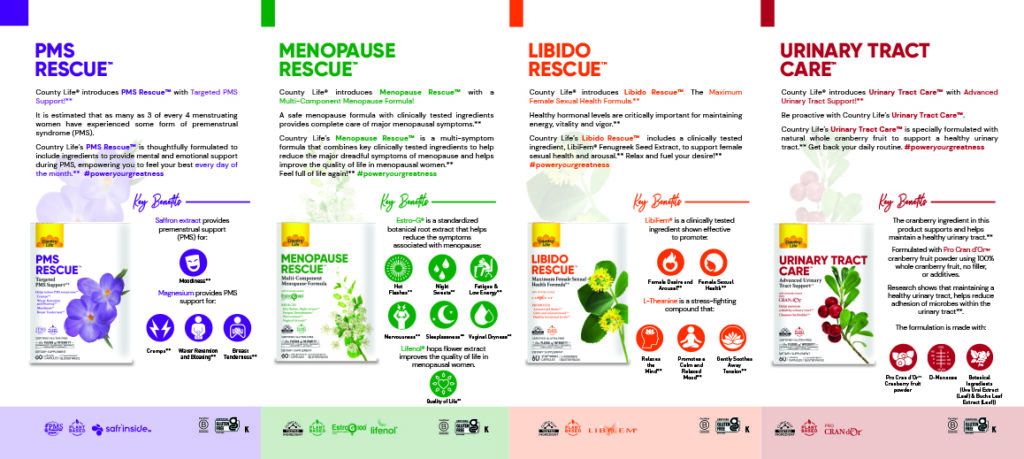
If you have been struggling with symptom management during your hormone life cycle stages, choose the one (or more) of the amazing Country Life Women’s Line products and #PowerYourGreatness!

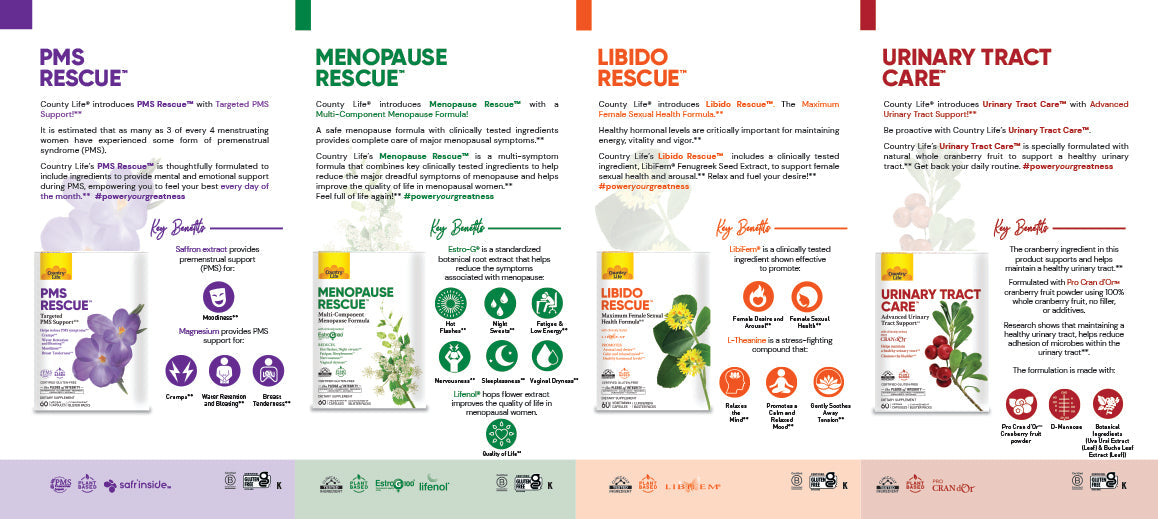
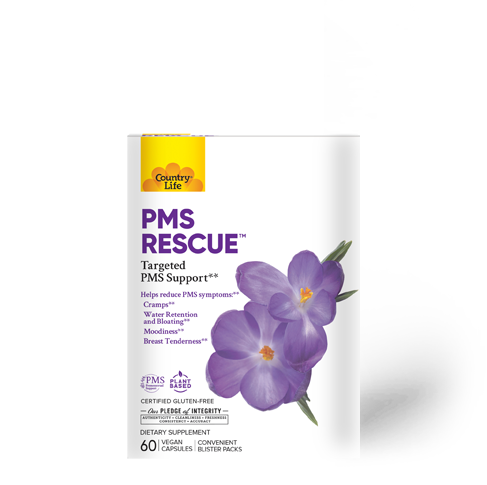
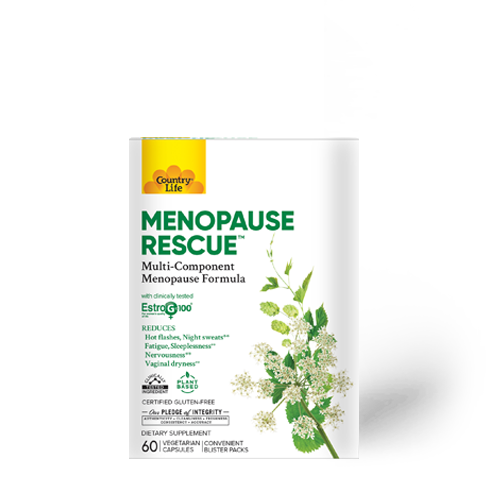
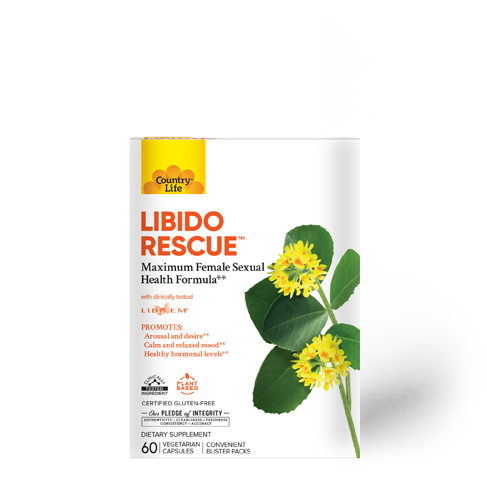










Share:
The Great Multivitamin Debate
The Great Multivitamin Debate